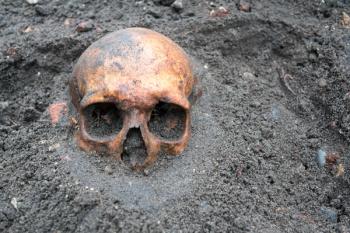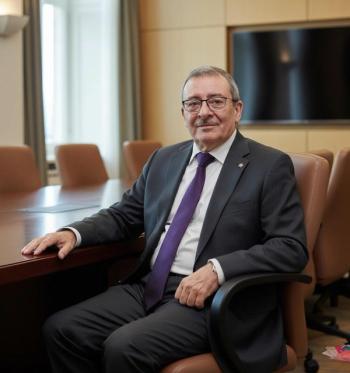
- Special Issues-08-02-2019
- Volume 34
- Issue 8
Seven Common Errors to Avoid in LIBS Analysis
Laser-induced breakdown spectroscopy (LIBS) is an "easy" technique. Setting up a LIBS experiment may take only a few hours; the equipment required is often quite standard (a laser, a couple of lenses, a spectrometer, and a computer) and relatively cheap, with respect to other spectro-analytical techniques. However, planning a sound LIBS experiment and correctly analyzing the resulting spectra is not a trivial task. In my 30 years of experience in the field (my first paper on LIBS was published in 1991), I've seen several recurrent errors that can irreparably plague the results of LIBS measurements.
Here is my personal compilation of the top seven errors that one should avoid in LIBS analysis.
Ca is Not Cd
As strange as it might seem, many LIBS experiments fail because of a misidentification of the spectral lines of one or more elements. The LIBS technique can detect practically all the elements in the periodic table (~100 x 2, considering neutral and ionized species), and some of these elements may show hundreds of spectral lines. It is, therefore, very easy to make a mistake, and assign a spectral line to the wrong element. A minimal shift of the LIBS spectrum might "transform" lines of common elements (calcium, magnesium, sodium) into other (sometimes very dangerous or exotic) elements. This is why the identification of the emitting species in the LIBS spectrum should never be done based on a single line; instead, the multiplicity of information coming from the different emission lines of the elements should be exploited!
Detecting Does Not Mean Measuring
The LIBS technique is not particularly sensitive for most elements of interest. For this reason, many different methods have been developed, aimed to improve the analytical performance of the technique. One of the most important figures of merit of an analytical technique is the limit of detection (LOD), which is the minimum quantity of the element that can be detected in a given measurement (the lower, the better). Under certain conditions, the LOD of a given element can be derived from the corresponding calibration curve using the well-known formula 3σ/b, where σ is the standard deviation of at least 10 independent measures of the analyte on a suitable blank, and b is the slope of the corresponding calibration curve. One should keep in mind that in the approximation of an ideal calibration curve with an intercept equal to 0, b*LOD represents the minimum signal that can be distinguished from the fluctuations of the signal of the blank with a limit of confidence of 3σ (for 99.7% probability).
Therefore, any indetermination on the intercept, coming from the uncertainty in the linear fit of the calibration curve, for example, would contribute to the σ of the blank. This effect can be much higher than the measured noise, and therefore it should be considered in the calculation of the LOD.
Moreover, being able to detect an element does not mean to be able to quantify it. The limit of quantification (LOQ) of an element is conventionally taken as 3–4 times its LOD. For determining the LOD, it is appropriate to have as the last point before the blank at least one sample with concentration close to the LOQ.
A common error in LIBS analysis is the determination of the calibration curves using only a few standards (typically <10), without measuring the blank and with the lowest point corresponding to concentrations hundreds of times higher than the LOD calculated with the 3σ/b formula.
We Need an Equilibrium
The local thermal equilibrium (LTE) approximation is often used for modeling LIBS plasmas. In this approximation, the laser-induced plasma is described as a system where all the processes are at equilibrium, except the radiation. In the framework of LTE, it is possible to define a plasma temperature that describes the system, and is the same for all the processes at equilibrium. The condition of having a negligible loss of energy by radiation in the time needed by the system to reach the equilibrium of the other distributions is expressed by the McWhirter criterion:
which is, however, necessary and sufficient only for a stationary and homogeneous plasma. In case of non-stationary or non-homogeneous plasmas (for example, in typical LIBS plasmas), two other criteria must be fulfilled for having an LTE plasma:
- In case of non-stationary homogeneous plasma, the time needed for the establishment of excitation and ionization equilibria must be much shorter than the time of variation of thermodynamic parameters.
- In case of non-stationary, non-homogeneous plasma, the diffusion length of atoms or ions, during a time period of the order of the relaxation time to the equilibrium, must be shorter than the variation length of temperature and electron number density in the plasma.
Seize the Moment
LIBS plasmas are highly dynamic systems, characterized by fast expansion and corresponding changes in electron temperature and number density. These parameters vary in time; therefore, their determination must be done using time-resolved spectrometers, with gate time typically lower than 1 µs. As we have seen, the assessment of the validity of LTE approximation requires the determination of plasma electron temperature and number density. A common error in LIBS experiments is the use of time-integrated (or time-resolved with long gate times) spectrometers for determining the fulfillment of LTE conditions in the plasma or for determining the composition of samples applying the calibration-free LIBS (CF-LIBS) algorithm (which is based on the LTE approximation).
Self-Absorption is Your Friend
Several recent works in LIBS describe plasma self-absorption as the major open problem in LIBS analysis. In fact, there are currently many methods for evaluating self-absorption in LIBS plasmas, as well as using this effect for improving the performance of LIBS as an analytical method. It is, therefore, inappropriate to present self-absorption as a problem in a LIBS work without at least mentioning the main strategies that can be used for evaluating (and thus compensating for) the importance of these effects. Not considering them is one of the most common errors in LIBS experiments. Moreover, one should not confuse self-absorption (a phenomenon that is always present in plasmas, being intrinsic in the interaction of radiation with plasmas) with the self-reversal phenomenon, which manifests with a narrow dip at the center of the spectral line. Self-reversal occurs only when the plasma is not homogeneous (colder at the borders).
Two is Better Than One
The introduction of double-pulse LIBS about 20 years ago has been one of the major breakthroughs in LIBS research. Enhancements of the signal up to two orders of magnitude have been demonstrated, using double-pulse LIBS (typically in collinear mode, with two nanosecond pulses delayed by several hundreds of nanoseconds). Orthogonal (reheating) DP-LIBS is also used, although the experimental setup is more complex and the enhancements relatively modest.
A complete modeling of collinear dual-pulsed LIBS (DP-LIBS) has existed for at least 15 years (and the basic mechanism of enhancement was already explained by Pershin in 1989). The explanation of the enhancement is related to the shock wave produced by the first laser pulse, which creates a favorable low-density environment in which the second laser pulse can create the analytical plasma.
As for self-absorption, the theoretical and practical knowledge about DP-LIBS is well established; however, from time to time new "explanations" of the DP-LIBS effect are proposed.
Discussing alternative theories is always legitimate, although the experimental confirmations of the fundamental role of the first shock wave are overwhelming. Therefore, any possible alternative theory about the DP-LIBS enhancement mechanism must account for the phenomena that are already successfully described by the current theoretical treatment.
Control Your Algorithms!
LIBS spectral analysis can be quite complex. In these last years, several chemometric methods have been proposed that can be effectively used for improving the performance of LIBS, for simplification, classification, or quantitative analysis of the samples.
However, using these methods without any verification of the results or knowledge of the principles at the basis of the algorithms used can be very dangerous. The most common error in LIBS chemometric analysis is the poor comparison of the results of the algorithms with the standard tools that have been used for decades, before the advent of artificial neural networks (ANNs), machine learning, and similar chemometric tools. In LIBS analysis, one should demonstrate that the chemometric methods are effectively better with respect to simpler approaches. Before using a neural network for quantitative LIBS analysis, for example, one should demonstrate that classical univariate calibration and linear multivariate analysis (for example, partial least square [PLS] analysis) do not work well.
The number of samples must be high enough to guarantee the statistical validity and significance of the results obtained, and these results must be correctly validated on external data-not used for the training of the algorithm.
When chemometrics is used for classification, care must be taken to avoid systematic effects; the samples must be prepared in the same way and analyzed in random order. One must also take care of not mistaking causes and effects; in a LIBS analysis for the screening of cancerous tissues, for example, a discrimination between normal and cancerous tissue could occur if the cancer patients have been treated with specific drugs that accumulate in the tissues, while the healthy patients were not.
The algorithms used in chemometrics are very powerful, but-just like Mickey Mouse with the enchanted brooms in the movie "Fantasia"-one should never lose control of them!
Vincenzo Palleschi is with the Applied and Laser Spectroscopy Laboratory at ICCOM/CNR, in Pisa, Italy. Direct correspondence to:
Articles in this issue
over 6 years ago
Vol 34 No 8 Spectroscopy, August 2019, The Resource Issue PDFover 6 years ago
Seven Essential Steps for In Situ Reaction Monitoringover 6 years ago
A Short Guide for Raman Spectroscopy of Eukaryotic Cellsover 6 years ago
ICP-MS: Essential Steps to Optimize Matrix Toleranceover 6 years ago
Spectroscopy Software/Computer Hardware/Automation Productsover 6 years ago
Spectroscopic Instrumentation: Spectrometer Systemsover 6 years ago
Sampling/Sample HandlingNewsletter
Get essential updates on the latest spectroscopy technologies, regulatory standards, and best practices—subscribe today to Spectroscopy.



